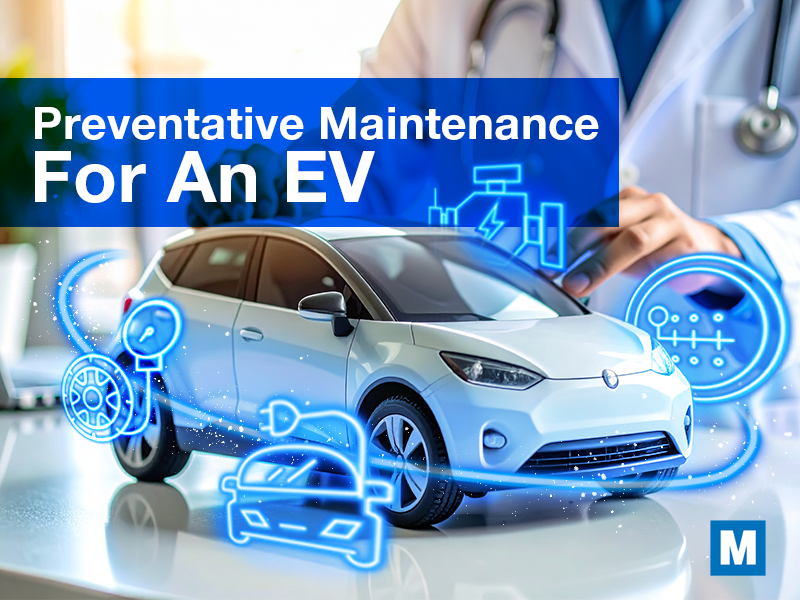While every vehicle fleet operates differently, some service and repair aspects are the same across the board. Batteries have a way of causing headaches after being in use for some time, and it’s true for semi-trucks that are on the road almost constantly for 300 or more days per year, agricultural equipment, or equipment like loaders and excavators that operate in the toughest conditions known to man, above or below ground.
And whether you’re a fleet manager or a service manager handling issues that come through the door, you need to be aware of the problems and how to address them. From battery failures to other electrical system diagnoses, here’s what you need to know about HD battery problems.
Identifying Common Battery Issues in Heavy-Duty Vehicles
Heavy-duty vehicles are the backbone of logistics, construction, and many other industries vital to the economy. These vehicles face demanding conditions daily, from long hours of operation to exposure to extreme environments. At the heart of their reliability and performance is the battery. Despite its critical role, it can often be overlooked until problems arise.
Systems can operate on 12-volts akin to typical automotive applications, although 24-volt systems are prevalent. It means technicians and fleet managers need to be more knowledgeable about differing system voltages, plus know how to determine the causes of different problems so they can be remedied.
Sulfation: The Silent Killer of Battery Life
One of the most prevalent issues affecting heavy-duty vehicle batteries is sulfation. This occurs when a battery is left in a discharged state for an extended period or when it’s not fully charged regularly. Lead sulfate crystals form on the battery’s plates, getting in the way of the chemical reaction necessary for charging and discharging. Over time, this can drastically reduce the battery’s capacity and lifespan.
The challenge with sulfation is its silent progression, and it happens on batteries of any voltage and size. By the time symptoms like slow cranking or difficulty starting become evident, significant damage may already have been done. What’s more, this issue tends to affect heavy-duty vehicles that are used infrequently, whether because they’re for seasonal usage like snow clearing or specialized applications
Proactive measures, such as regular battery testing and maintenance schedules, are vital. Midtronics’ advanced diagnostic tools, for example, can detect early signs of sulfation, allowing for corrective actions like controlled overcharging to dissolve the lead sulfate crystals before they cause irreparable harm.
The Dangers of Undercharging and Overcharging
Both undercharging and overcharging present significant risks to battery health. Undercharging leads to acid stratification, where the electrolyte concentration is stronger at the bottom of the battery, causing the upper half of the cells to be deficient in acid. This imbalance can corrode the upper part of the plates and weaken the overall structure of the battery.
Overcharging, on the other hand, causes excessive heat and leads to water loss and plate damage. In severe cases, it can even result in battery explosions. Modern charging systems equipped with voltage regulation technologies ensure batteries operate within their optimal charge levels, mitigating these risks, but problems with alternators tend to the be cause here. Routinely checking not just battery condition but the charging system can help identify over- and undercharging early on, potentially saving a battery replacement.
Deep Cycling Woes
Heavy-duty vehicles often require deep battery discharge during operation, known as deep cycling. While some batteries are designed to withstand deep cycles, repeated deep discharging can strain and wear out the battery prematurely. The key to managing this challenge is choosing the right type of battery for the vehicle’s needs and ensuring it’s equipped with deep-cycle resistance.
Battery testers can assess a battery’s deep-cycle endurance and overall health, guiding fleet managers in making informed decisions about when replacements are necessary and how to extend the service life of existing batteries.
Temperature Extremes: Batteries’ Worst Enemy
Extreme temperatures, both hot and cold, can wreak havoc on battery performance. Cold weather increases the electrical resistance and thickens engine oil, making batteries work harder to start engines. Heat accelerates chemical reactions inside the battery, increasing the rate of water loss and the likelihood of internal damage.
Mitigating temperature effects starts with proper vehicle care, battery selection, and maintenance. Routine services should account for weather-related changes, like using winter-grade oils when necessary and ensuring engine block heaters are used in cold weather, easing the challenge of cold starts.
Vibration Damage: The Rough Road Challenge
The constant vibration experienced by heavy-duty vehicles can physically damage batteries, leading to short circuits or broken internal connections. This issue is especially prevalent in off-road vehicles and those operating in rugged conditions like agricultural tractors, and large construction equipment.
To combat this, batteries must be securely mounted and protected against vibration wherever possible. Additionally, regular inspections can catch early signs of wear from vibration, allowing for preventative maintenance or replacement before a failure occurs.
How Routine Battery Analysis Helps
Downtime is lost profit and missed delivery targets, and that’s bad for business. Keeping fleet vehicles operating trouble-free requires stringent maintenance schedules, and battery services and inspections are a component of that.
By detecting anomalies with batteries before they lead to vehicle failure, it gives the service individual or team an opportunity to procure the parts needed to correct the problem without the pressure of a vehicle being off the road, unable to fulfil its responsibilities. What’s more, it saves the fleet the additional cost of a battery replacement at times, when the diagnosis identifies the problem before lasting damage has been done.
With Midtronics DSS-5000 HD Heavy-Duty Battery and Electrical System Analyzer on hand and part of your service routine, these common issues can be dealt with using advanced diagnostic processes like Conductance Profiling. As capable with 24-volt systems as with 12-volt, this tester ensures batteries are ready for service, no matter how large or small your vehicles or your fleet may be.




